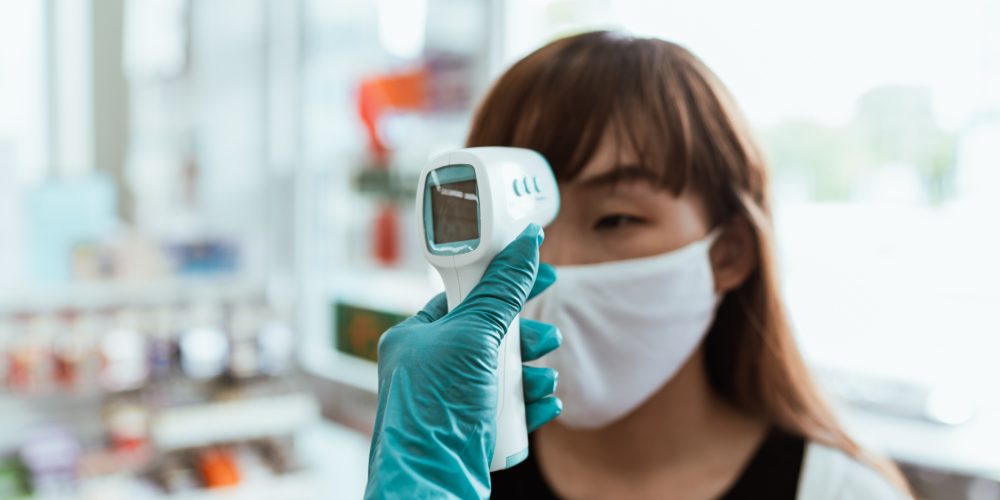
What Are Some Symptoms of the New Omicron Variant of COVID-19?
The new COVID variant, Omicron, has caused a wave of infections, accounting for nearly 99% of all active cases in the United States. Since Omicron is more transmissible than previous strains of COVID-19, and has slightly less obvious symptoms, cases continue to rise at an alarming rate. In fact, hospitalizations and infections are reaching record highs.
So how do we try to stop the spread, flatten the curve once again, and put an end to this global health crisis? One way is to get a little more knowledgeable about the Omnicron variant, understand its symptoms, and ultimately decide when to get tested or stay at home and quarantine. This blog is a great place to start finding that information.
What is The Omicron Variant?
On November 26, 2021, the World Health Organization deemed Omicron a variant of concern. This decision was made based on the fact that Omicron presents different symptoms and has a different transmissibility than other COVID variants. According to research done in countries where Omicron is prevalent, there is no conclusive evidence that it will spread more easily; however, the CDC expects this to be true.
It is still unclear whether Omicron causes more severe illness than previous variants. The preliminary data does suggest that hospitalizations are increasing with the variant, particularly among unvaccinated populations. However, there is evidence to suggest that vaccines are still effective at preventing severe illness and hospitalizations for this particular strain.
Does Testing Still Work?
Fortunately, current COVID-19 testing seems to accurately detect Omicron, and remains an invaluable tool in stopping the spread.
What are the Symptoms of Omicron?
Among other nuances, Omicron infections present with some different symptoms than previous strains, like Alpha or Delta. According to an NBC article interviewing Dr. Katherine Poehling, an infectious disease specialist and vaccinologist at Atrium Health Wake Forest Baptist in North Carolina, Omicron symptoms include:
-Cough
-Sore Throat
-Fatigue
-Headache
-Runny Nose
It’s worth noting these symptoms are not unique to Omicron.
Unlike previous COVID-19 strains, symptoms of Omicron are more mild in how they present and can often be confused with ailments like the common cold, flu, or even allergies. Additionally, well-known symptoms from previous strains, such as loss of taste or smell, seem to be uncommon in Omicron cases.
While it’s a good thing that infected people are no longer experiencing these effects, the downside is that many people still think they need to have those symptoms to have COVID-19. This means that even though someone may be infected and showing other symptoms, because their sense of smell or taste is unaffected, they might believe they do not have COVID-19. That is not true. As the list above shows, the new omicron variant symptoms can include seemingly innocuous ailments—not unlike a common cold, for example.
Symptoms are not the only thing to change with Omicron in the U.S.A. The CDC has also introduced new guidelines and suggestions to follow. Let’s take a look at those now.
How Soon After Exposure to COVID Are You Contagious With Omicron?
The current school of thought is that you are contagious within 1-2 days of becoming infected with Omicron, just like other strains of COVID-19. That being said, it can be hard to pinpoint exactly when you were exposed, if you were infected, and whether the person who exposed you was contagious, so you should follow the CDC’s updated quarantine and isolation guidelines.
How Soon After Exposure to COVID Can I Be Tested?
After being exposed to the Omicron variant, you should try and get tested on day 5, according to the CDC. If you start to develop symptoms before day 5, you can get tested once your symptoms appear. This is true for anyone, regardless of their vaccination status.
However, depending on whether you are fully boosted, partially vaccinated, or completely unvaccinated, what you do after exposure varies.
-For fully vaccinated and boosted individuals, when it comes to quarantining you should wear a mask around people for 10 days, but you can go about your normal routine.
-If you are unvaccinated or unboosted, you should stay at home for the first 5 days, and then wear a mask around others for the remaining 5 days.
-If you cannot stay home you must wear a mask around others for the full 10 days.
BioCollections…Your Trusted COVID-19 Source for Testing and Updated Information
At BioCollections, we know the COVID-19 pandemic can be a source of distress and anxiety for many. Whether it’s the ever changing information, new variants, or trying to find a test and get results in a timely manner, there’s a lot of legwork on your end. Fortunately, you are not alone. BioCollections is committed to provide fast, safe and accurate COVID-19 tests, with transparent communication every step of the way. You can even get same-day results. Beyond that, we are your trusted source for up-to-date information and answers to your most pressing pandemic questions. Head over to our website to schedule a test today or check out our blog for more content.
